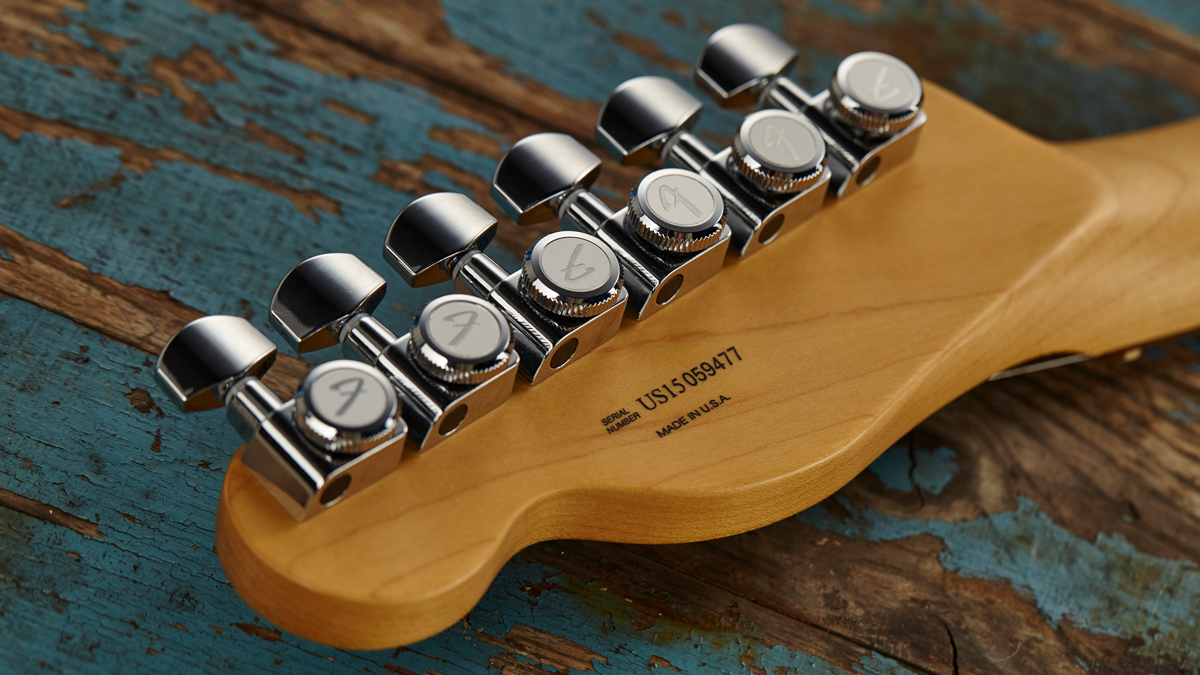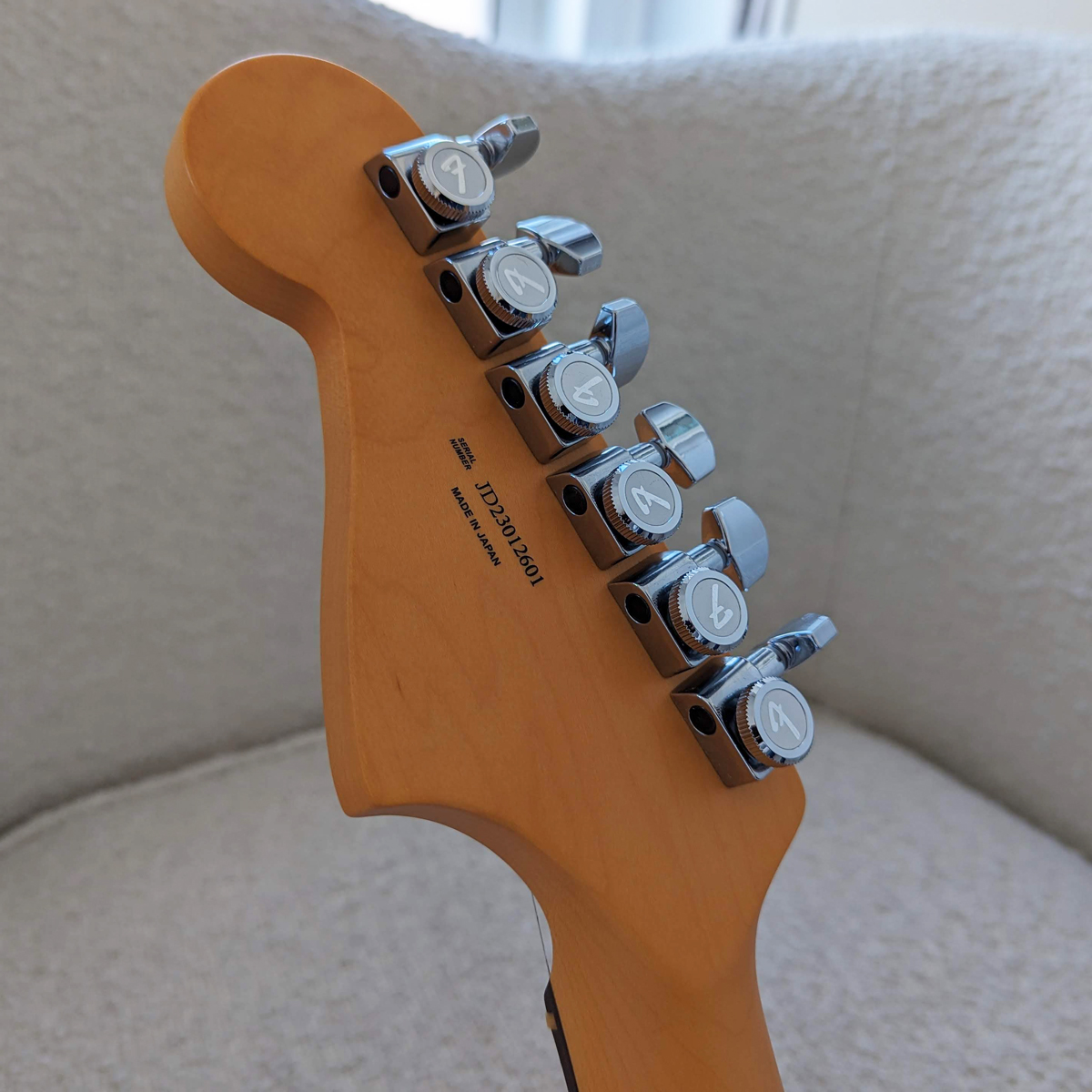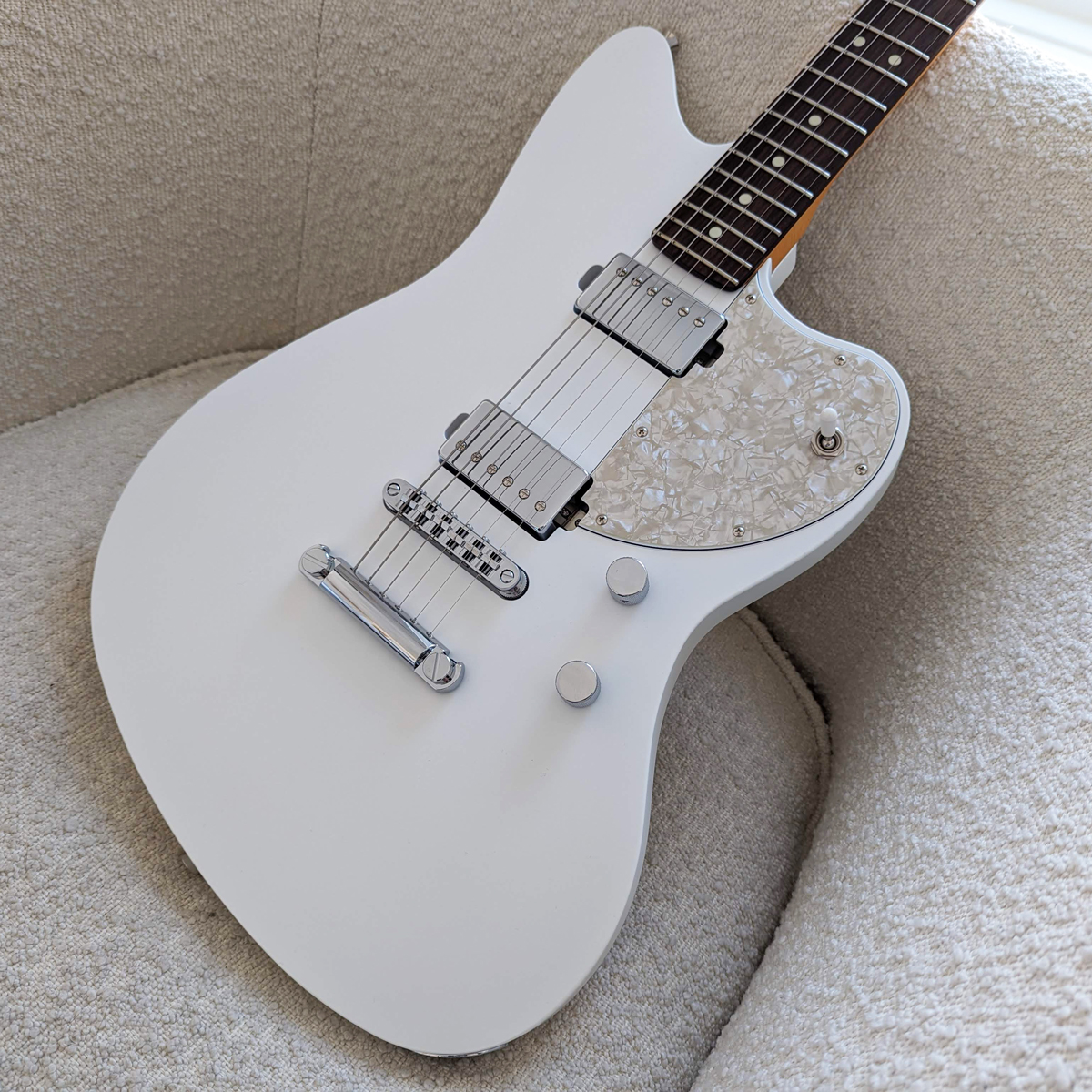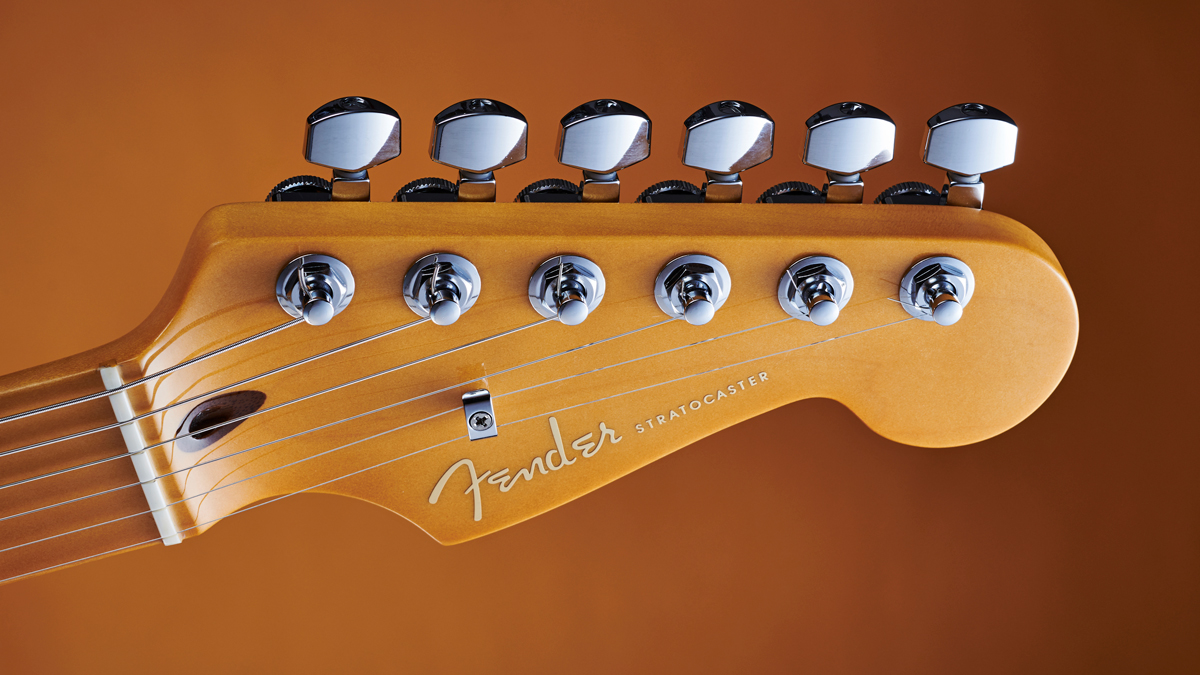I’ve been fitting locking tuners to all my electric guitars for 20 years – and I just found out I’ve been using them wrong the whole time
It turns out there’s a right way to restring locking tuners – and it will make your guitar stay in tune better

As someone who hates restringing guitars, let me go on record and say that locking tuners are one of the greatest inventions in the history of mankind.
No wrapping, no tucking the string under, no confusion: just stick the string through the hole of the relevant machinehead, tighten that thumbwheel, tune up, job done.
Over the past two decades, I’ve fitted locking tuners to pretty much all my guitars. I’ve used Sperzels on a Cort G Series, Fenders on a baritone Telecaster and even budget Amazon offerings on my go-to Fernandes offset. All of them have six-a-side headstocks, and I’ve always restrung with the same boneheaded attitude: turn them all roughly straight so the hole lines up with the bridge, jam the string in and tighten. But it turns out I’ve been doing it all wrong.
I recently picked up a Japanese-built Fender Elemental Jazzmaster (for more on that, read my column on whether Fender Japan’s crazy-limited electric guitars live up to the hype), which I immediately got fitted with locking tuners.
It’s my first guitar to pair lockers with a top-loading tailpiece (as opposed to the string-through Strat-style design that features on my other locking tuner-ready guitars). I swapped out the factory strings for a set of D’Addarios, adopted my usual half-assed method of getting the tuners in line, and went on with the business of actually playing.



Later that day, I was soundchecking the guitar for its first gig – it sounded killer and the tuning stability was on-point. But when it came to showtime, I turned on my PolyTune Mini and struck what should have been the high E string. It was feeling mighty loose and registering as a G. That’s a new one.
So I did what any guitarist would do in my situation: I tuned up and prayed it would return to pitch… No dice. The string popped right out of the tuner, fully intact.
Get The Pick Newsletter
All the latest guitar news, interviews, lessons, reviews, deals and more, direct to your inbox!
Thankfully I had a backup to get through the gig, but my mind was fixated on the problem that prevented what should have been my new squeeze’s triumphant first show: how the heck did that high E string slip so badly out of tune?
Maybe I accidentally loosened the locking mechanism. But I had experienced a similar slip when I dropped a Beat It-worthy whole-tone bend at the 22nd fret in rehearsal the previous day. That time, it did tune back up, but this was quickly becoming a pattern.
Like the guitar hypochondriac I am, I googled my very specific problem. And I was reassured – and, it has to be said, somewhat ashamed – to learn that I had been using locking tuners wrong all this time.
After scanning far more Reddit and forum threads than I care to admit, my travels took me to a video from reliably tasteful YouTuber Jay Leonard J, helpfully entitled ‘How To Properly Re-String Your Locking Tuners’.
In the clip, Jay described the very problem I was experiencing: string slippage on the high E. The solution? The 123345 method.
This isn’t some sort of Fibonacci sequence conspiracy. If you think of the guitar’s headstock as a clock face, the numbers refer to the angle at which the tuners’ openings should be facing when you insert the string (you can see what this looks like in Jay Leonard J’s video thumbnail above).
So, the high E string hole is set at 1:00, the B at 2:00, the G and D at 3:00, the A at 4:00, and the low E at 5:00. For Les Paul players, Jay recommends 5:00 (low E), 4:00 (A), 3:00 (D), 9:00 (G), 10:00 (B), 11:00 (high E).
By stringing up this way, you give the top three strings extra winds, ensuring any increased tension that comes about from bending strings won’t yank the string out of the tuning peg hole.

Now, that’s unlikely to happen with the higher-gauge strings in a set, but as I can attest, it can most definitely happen with a 0.010 on a top-loading guitar – I can only assume there was something about my through-body-stringing setups on other guitars that had saved me from this particular calamity in the past. Maybe it was the height of the string trees or the angle of the headstocks. Or perhaps it was just dumb luck.
Still, given how many locking tuners I’ve owned over the years, I was surprised to find I’d never come across this method before, especially given it’s now official Fender setup advice.
So consider this a public service announcement of sorts, and make the 123345 method your new restringing ritual.
All credit to Jay Leonard J for his advice, which – touch tonewood – has saved me a rather embarrassing call to Fender’s customer service team, and means I can get gigging my new offset prize with confidence. You never stop learning, folks…

Mike is Editor-in-Chief of GuitarWorld.com, in addition to being an offset fiend and recovering pedal addict. He has a master's degree in journalism from Cardiff University, and over a decade's experience writing and editing for guitar publications including MusicRadar, Total Guitar and Guitarist, as well as 20 years of recording and live experience in original and function bands. During his career, he has interviewed the likes of John Frusciante, Chris Cornell, Tom Morello, Matt Bellamy, Kirk Hammett, Jerry Cantrell, Joe Satriani, Tom DeLonge, Ed O'Brien, Polyphia, Tosin Abasi, Yvette Young and many more. In his free time, you'll find him making progressive instrumental rock under the nom de plume Maebe.
“Add a dash of smokin’ style to your tuning game”: Keef and Clapton fans, rejoice – Tunerette honors the heyday of rock ‘n’ roll with a clip-on tuner that looks like a cigarette
"This is an excellent, compact pedal that helps you tune accurately and quickly": Peterson StroboStomp Mini review

![A black-and-white action shot of Sergeant Thunderhoof perform live: [from left] Mark Sayer, Dan Flitcroft, Jim Camp and Josh Gallop](https://cdn.mos.cms.futurecdn.net/am3UhJbsxAE239XRRZ8zC8.jpg)









